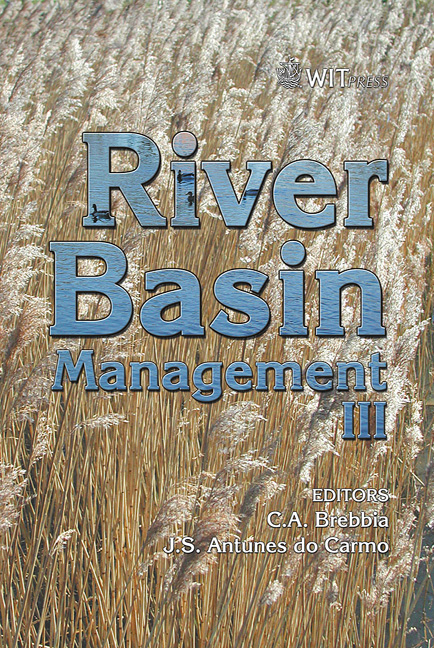A Distributed Technique For Flood Damage Assessment Using GIS And A 2D Hydraulic Model
Price
Free (open access)
Transaction
Volume
83
Pages
10
Published
2005
Size
687 kb
Paper DOI
10.2495/RM050421
Copyright
WIT Press
Author(s)
S. Fattorelli & E. Frank
Abstract
When flood risk mitigation actions are planned, the assessment of what the expected annual damage would be with or without the proposed measures assumes a fundamental role with reference to cost-benefit analysis. The expected annual damage is computed by integrating the damage-probability function which, depending on the size of the problem and on the data available, can be calculated according to different methodologies, varying in their degree of complexity, described in the relevant literature. This paper presents a methodology aimed at predicting and quantifying the damage caused by flood events. Such a methodology combines the 2D hydraulic model's capability to accurately simulate and describe the evolution of flooding with the GIS ability to carry out spatial analysis operations. The results from the 2D hydraulic model (water level, velocity and persistence time in each computation cell) are crossed with the raster maps featuring the characteristics of the elements at risk (land use, economic parameters). By the application of damage functions (or vulnerability curves) to each of the cells within the domain, damage maps are derived and the total value of the economic damage associated with the simulated flood event is finally determined. This distributed methodology has been validated using information data from a flood event (July 1981 at Salorno, Bolzano) which occurred in the study area. Given the good results of the above-mentioned validation, the same methodology was applied to quantify the expected annual damage in the areas affected by flood risk along the Adige river between the city of Bolzano and the confluence with the Noce river and to determine the benefit expected from different scenarios of flood reduction measures. Keywords: flood damages, 2D hydraulic model, GIS, flood reduction measures.
Keywords
flood damages, 2D hydraulic model, GIS, flood reduction measures.





